
The 5 Major Jewish Holidays
There are a number of reasons for the differentiation between well-known Jewish holidays and those of less familiarity. As a general rule, the main holidays are longer in length as well as also being more commercially accessible. This accessibility is largely due to both the nature of the holiday and the overall level of participation and celebration in the wider Jewish community. On the other hand, the holidays that are less known usually last for only a day or two and do not have substantial potential from a marketing and commercial perspective.
Either way, understanding the different Jewish holidays and how to capitalize on the potential they hold could be very valuable to your business or organization. The challenge that those looking to embark on Jewish holiday marketing usually encounter relates to the knowledge required to formulate a proper marketing strategy. Each of the Jewish holidays has a wide range of intricacies as well as effects, including, believe it or not, the possible fluctuation of the stock market. Being cognizant of all the different moving parts, including which holiday to market towards and which audience to target, can be quite overwhelming.
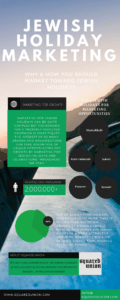
The 5 major Jewish holidays are Rosh Hashanah, Hanukkah, Sukkot, Passover, and the Sabbath. These five holidays were picked based both on their considerably widespread celebration among Jews across the world as well as for being the most well-known. While these five holidays are pretty well known and generally celebrated to some extent by a substantial portion of the Jewish community, there are a lot of variances when it comes to the different subsets of what can be termed the “wider Jewish world.” This variance determines the extent of observance of certain holidays and, in turn, also affects their overall significance. Therefore, a certain Jewish holiday may be of greater importance in one Jewish community or group than in another. It is, therefore, important to be aware of subtle differences between communities and their interactions with the various major Jewish holidays.
1 – Rosh Hashanah
Rosh Hashanah, unlike other New Year celebrations, is one of contemplation and aforethought rather than festivities and parties. It is a time of much prayer as well as for family and meals together. In addition, it is the first of the high holy days and marks the general start of one of the main holiday seasons in the Jewish tradition. Rosh Hashanah is a two-day holiday and is a bit more than a week before the second Jewish high holiday of Yom Kippur.
It is when shopping and preparations are being made for the lengthy and more substantial holiday of Sukkot. For this reason, while the holiday of Rosh Hashanah provides its own unique marketing opportunities, it should be seen as an opportunity to reach Jewish consumers who are preparing for Sukkot as well.
Rosh Hashanah is of unique strategic importance because of its position as one of, if not the most widely celebrated Jewish holiday. It is one of the few Jewish holidays where synagogues outside of the orthodox communities see a huge spike in attendance. With the participation of otherwise generally unaffiliated Jews, who are arguably the hardest to reach, Rosh Hashanah, from a strategic viewpoint, offers high-potential targeting opportunities. Some of the most present marketing opportunities relating to Rosh Hashanah revolve around food & wine as well as charitable giving. Being that Rosh Hashanah is primarily a time of thought, contemplation, and prayer, when compared to other Jewish holidays, it is not a very “commercial holiday.” With that being said, it does hold some very strong opportunities for certain niche offerings.
2 – Sukkot
Sukkot is one of the longest Jewish holidays, clocking in at a whopping nine days outside of Israel (8 days in Israel), and takes place during September and/or October. It is quite an unusual holiday in the sense that it requires the eating of meals in what can be described as a makeshift hut (a Sukkah). Although conveniently called a hut, these days, many Sukkahs are pretty glamorous.
Like most Jewish holidays, Sukkot also provides a substantial opportunity for those who have offerings relating to food and wine. With that being said, it also provides some unique opportunities that do not apply to other Jewish holidays. Due to the role that the Sukkah plays in the holiday, there is a need for building and decorative materials. Therefore, hardware and building supplies stores in neighborhoods with concentrations of Jews celebrating Sukkot see a substantial uptick in business.
Families also treat the middle days of Sukkot (Chol Hamoed) as a time to spend quality time together, and oftentimes, this takes the form of travel and visiting of attractions. Depending on the nature of the trip and the age of the children, there are a large variety of opportunities for zoos, amusement parks, hotels, and other related offerings.
Although this was previously mentioned, it is important to understand the Jewish audience. While Rosh Hashanah is almost universally celebrated in some capacity, Sukkot is celebrated in varying degrees. Modern orthodox and ultra-orthodox Jews celebrate Sukkot with the highest levels of participation, while celebrating Sukkot within the secular or unaffiliated Jewish world is pretty uncommon.
3 – Hanukkah
Hanukkah is arguably the Jewish holiday that is most widely known outside of the Jewish world. The reason for this is probably due to its general proximity to Christmas, which plays a part in its overall commercial viability. With that being said, it is a mistake, especially in the marketing context, to treat Hanukkah as the “Jewish Christmas.” Not only is the description inaccurate, but that mindset will likely create substantial problems for any marketing campaign based on such mistaken assumptions. Other than both holidays falling out during the same season, there are actually no foundational similarities at all.
The Hanukkah celebration lasts for eight days and is a time for family, gifts, and festivities. Unlike some of the other Jewish holidays like Sukkot, Hanukkah enjoys widespread celebration across almost all Jewish communities, whether secular or religious. This presents a strong opportunity for marketing efforts to reach a large cross-section of the Jewish world. Some of the most present opportunities for Hanukkah marketing include a wide array of offerings for gifting as well as travel and hospitality.
The marketing potential that the gifting tradition during the holiday of Hanukkah brings should not be underestimated. With 8 days of celebration, there are a lot of gifts that have to be purchased. Some of the strongest players in the field taking advantage of the Hanukkah-related opportunities are those in jewelry, electronics, and fashion offerings. With that being said, there is ample opportunity for some less obvious offerings to make entry into this lucrative holiday marketing opportunity.
In addition to the opportunities relating to gifts, because of the increasing prevalence of Hanukkah parties and large family celebrations, the event and party sectors can see a substantial uptick in business due to Hanukkah. Hotels can also make the most of Hanukkah by touting their accommodation and amenities catering to a Jewish clientele for this holiday. Some families enjoy going away with a large contingent of their close and extended family for a weekend, and this presents an opportunity with substantial potential.
4 – Passover
A holiday spanning seven days, Passover takes place in the Spring and usually falls out sometime in April. The hallmark of the holiday is the prohibition against eating various foods, most notably bread. Like other Jewish holidays, food and wine play a large role due to the regular family gatherings and meals. Unique to Passover, though, are the great lengths that food brands go to certify their products as kosher for Passover. Brands like Coca-Cola have special lines of soda that are manufactured with different ingredients so that they comply with the strict Passover dietary guidelines. Lays and Tropicana also have special manufacturing runs that are made to specifically accommodate the “kosher for Passover customer.” While going to great lengths to get certified as kosher for Passover on top of standard certification does not make sense for many food brands, the message here should be clear. The importance of the kosher consumer is quite apparent in the lengths that brands will go to in order to capture the Passover food market.
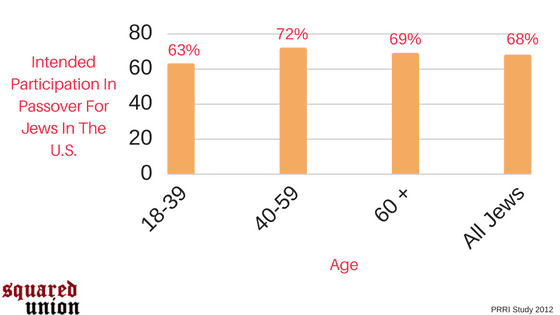
In addition to food, Passover shares some of the hallmark marketing opportunities that Sukkot does. Specifically, during the days of the holiday when travel is allowed, attractions, hotels, and other activity-oriented sectors see an uptick in business. Likewise, hotels offering full and partial programs for Passover are gaining in popularity. Families going away to a hotel is of specific popularity during Passover because of the cleaning that must be undertaken to rid the home of bread and other prohibited food items. By going away for the holiday, much stress and hassle are avoided as such exhaustive cleaning is no longer required as the family will not be home. Over the years, Passover programs have been popping up in increasingly exotic destinations that are relatively far from the high-concentration Jewish populations. Therefore, there has been an increasing demand for airfare and other travel-related services during the Passover holiday as well.
5 – Sabbath
The Sabbath is quite possibly the holy grail in many respects in terms of Jewish holidays. Taking place every week from Friday evening to Saturday night, this holiday is multi-faceted and is observed in varying degrees among Jews across the world. Brands that understand the unique intricacies of the Jewish Sabbath are suited to capitalize on the substantial opportunities it brings. As an example, appliance brands like GE and Sub-Zero offer special product lines that offer a “Sabbath mode” that allows the user to observe the Sabbath while still being able to make use of the appliance. This effort on the part of these large companies should bear testament to the value of catering to the Jewish consumer in terms of the Sabbath but in general as well.
When it comes to marketing for the Sabbath, the magic word is “accommodation.” The Jewish consumer wants to feel as though their observance is taken into account yet also made as carefree as possible. This is not a contradiction. It is a delicate balance between respect for tradition while at the same time adapting to the conveniences that the modern world provides. With that theme in mind, regardless of whether your offering is an appliance or a travel getaway, the starting point should always be thought of in terms of accommodation and “pain points.” With that perspective, unique opportunities are uncovered, and strategy execution is well crafted.
Navigating The Maze of Jewish Holiday Marketing
Jewish holiday marketing can be quite challenging and overwhelming upon the initial plunge. Still, many businesses and organizations are lured to the quite intimidating endeavor because of the potential for growth that a properly crafted Jewish holiday marketing campaign has. When it comes to marketing for Jewish holidays, the two most prominent and substantial challenges are the requirement for knowledge about various Jewish holidays as well as knowing the numerous different Jewish communities. Sufficient knowledge of various Jewish audiences needs to encompass how they interact with each of the relevant Jewish holidays as well as how to best reach the selected audience.
Determining Potential for Marketing Opportunity
The determination of whether a specific Jewish holiday holds potential in a commercial context depends on a number of factors, some of which are native to the holiday in question and some dependent on the nature of your offering. To further clarify, some holidays offer more opportunities based solely on the nature of the holiday. At the same time, the fact that a specific Jewish holiday is either very commercially viable in general terms is only of partial significance. A holiday can have all the commercial flair in the world, but if your offering is not relevant to the holiday, then the general opportunity is of no consequence. A comparison of two very different Jewish holidays can help illustrate this point. Yom Kippur (one of the high holy days) and Hanukkah both provide unique opportunities, but Hanukkah is unquestionably the winner when it comes to the potential for marketing. At the same time, there are some offerings that would be of special relevance to Yom Kippur that even Hanukkah (with all its potential) cannot provide.
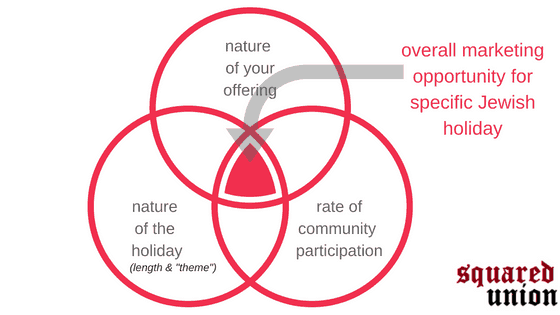
A Different Calendar Can Cause Confusion
With the Jewish calendar varying in different degrees from the one used throughout most of the world, it is important to be aware of even slight differences that can end up being quite monumental. For example, while Hanukkah oftentimes falls out relatively close to Christmas, depending on the Jewish calendar, the dates can vary. Sometimes Hanukkah falls directly when Christmas does (as was the case in 2016), and sometimes it can fall out weeks before Christmas. Being aware of differences in calendar and dates is of special importance when planning marketing for the “Duo Seasons,” which is described in detail below.
Your Offering Dictates
When looking at Jewish holidays in a marketing context, it is important to establish that while a specific holiday may be of great significance within the community, that does not necessarily mean that it holds substantial potential opportunity. Therefore, delineating which holidays offer commercial viability should be made the first priority. Likewise, opportunities present for specific holidays will depend on your offering and whether it is relevant to what the holiday involves. Still, some opportunities are generally present across the board for certain offerings, such as those in fashion, gifting, and food.
Why Marketing to The Jewish Community Holds Potential
For those familiar with the potential of marketing properly to the Jewish community, this may seem redundant. At the same time, it pays to review exactly why there is an increasing interest on the part of both businesses and organizations of various sizes to penetrate this valuable market. There are two main reasons behind the allure of the Jewish market. The first is based on the considerably higher-than-average income levels of Jewish households. In a Pew study, Jews were found to have the highest percentage of income above $100,000, clocking in at 44%. The next highest-earning religious group, Hindus, came in at almost 10 points lower.
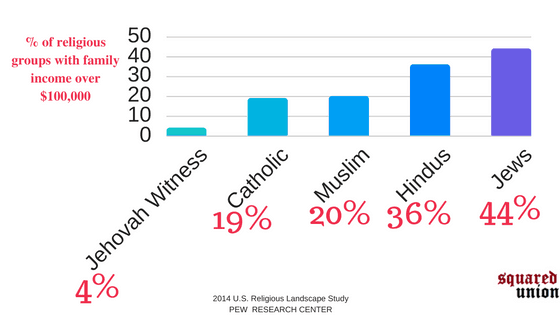
In addition to the relative wealth of the Jewish community being well above the average, another reason for Jewish-centered marketing campaigns relates to the opportunities more native to the traditions and religious underpinnings. From marketing for the many different holidays to manufacturing products that are in line with religious specifications, brands can make accommodations that allow them to corner large swaths of the Jewish consumer group in a relatively focused and precise effort.
While the two reasons listed are the primary reasons, there are a whole host of ancillary but related rationales. These range from the mundane to the rather surprising. To illustrate the broad spectrum of Jewish marketing needs, let us take the example of a client in the healthcare and life sciences sector who wanted to explore the opportunities relating to genetic testing for diseases prevalent in certain cross-sections of the general Jewish community. The draw of marketing to a Jewish segment is wide-ranging and, with the right approach, is generally applicable to almost any industry. Both the challenge and recipe for success are in thinking in a strategic and creative manner. This mindset fosters the discovery of new opportunities and helps to craft a properly crafted marketing strategy combined with subsequent proper execution.
Combining Efforts for “The Duo Seasons”
When marketing for Jewish holidays, something that should be kept in mind is the role of what we have termed to be the “duo seasons.” This refers to seasons where Jewish holidays take place in close relative proximity to other non-Jewish holidays. Some of these include the winter season, which includes both Christmas and Hanukkah as well as the spring season, which includes both Easter and Passover. These “duo seasons” are advantageous from a Jewish marketing perspective for a number of reasons, but primarily because they allow for marketing efforts for both holidays to be combined to varying extents.
Obviously, the number of combinations possible will vary depending on the specific circumstances, but there is usually extensive overlap, and therefore, much time and money can be saved. As an example, there can be an overall “holiday marketing campaign” with only the finer details differentiating for both Christmas and Hanukkah in terms of design and targeting. While marketing with a “duo seasons” certainly has its advantages, there are some inherent risks and errors that need to be avoided. The main thing to be wary of and ensure against is any overt conflation of Jewish holidays with those of other religions. For example, formulating Hanukkah as the “Jewish Christmas” would be a mistake and would quite certainly have unintended yet substantially negative repercussions.
Similarities Across Most Jewish Holidays
It should be noted that due to the nature of what Jewish holidays entail, there are certain constants that are generally present across the board. An obvious one that is not native to Jewish holidays, but celebrations in general, is food. Jewish holidays are packed in with multiple meals a day that is formal and usually play host to large gatherings of family and friends. While nuclear Jewish family sizes vary from one community to the next, many cross-sections of the Jewish audience, contain both larger-than-average nuclear and extended families. This accentuates the demand for food products beyond what might be expected from the average non-Jewish family.
The Jewish consumer who keeps kosher is also constantly on the lookout for new certified kosher products and will be much more likely to sample a market entrant than a traditional non-kosher consumer. This willingness and seeking out new food products, combined with the general demand based on the nature of Jewish holidays, makes the food sector a very alluring opportunity in terms of Jewish marketing potential.
While there is a general demand for food products that is accentuated by the Jewish holidays, there are certain kinds of food that are more or less in demand depending on the holiday in question. For example, during the Passover holiday, bread and other related products take a backseat. On the other hand, during the holiday of Shavuot, there is a strong tradition for eating dairy foods, and therefore, food brands that properly cater to that need will likely see an increase in sales.
In addition to the constant demand for food products across the Jewish holidays, there is also an overarching demand for wine and other alcoholic beverages. As was stated with food, celebrations in general, no matter which group, are likely to be seeking out alcoholic products. With that being said, the demand for such products in the Jewish market is arguably more pronounced. This is mostly because of the ceremonial role that alcohol plays in many of the Jewish traditions and celebrations. From the weekly blessings made over wine to the holiday of Purim, where alcohol plays a substantial role, it is hard to miss the ample opportunity when it comes to the alcoholic beverages market in the Jewish world.
Segmenting The Wider Jewish Community
Another point to keep in mind when embarking on a Jewish holiday marketing campaign is the broad range of holiday observances among the many different Jewish communities and groups. While much of the Jewish community is similar in a number of ways, when it comes to traditions and other aspects of religious observance, there is a lot of variance and fracturing. This takes place along the obvious lines such as religious affiliations (i.e. Reform or Orthodox) but also along with less apparent differentiating points. It is, therefore, vital to understand both which holidays relate to your offering as well as which Jewish audience will relate to both your offering as well which holiday can best act as a conduit to that audience. For example, you might experience great results in reaching your Jewish audience through a Hanukkah marketing campaign because that is more widely celebrated, but not with Passover, as it is not celebrated to the same extent. Finding the most beneficial Jewish audience to concentrate your marketing resources on requires the segmentation of the broader Jewish audience into smaller groups.
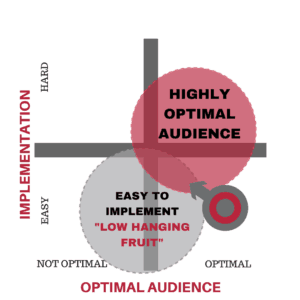
Celebrations Galore In Addition to Holidays
Once we are discussing the Jewish holidays, we would be remiss if we did not stress the plethora of other Jewish celebrations throughout the year that also pose strong potential marketing opportunities. Many of these revolve around what are termed “life cycle” events and celebrations. While some of these are universal across all segments of the population – whether Jewish or not, in the Jewish world, oftentimes, these celebrations are made on a more pronounced level. This has a lot to do with the religious significance of such events as well as the tradition of inviting larger amounts of people. At the same time, some of these celebrations are unique to the Jewish tradition and pose their own opportunities not found elsewhere. These include Bar and Bat Mitzvahs as well as the birth of children.
Avoiding Faux Pas
The greatest challenge present when embarking on any ethnic-centered marketing is the rule that, at the end of the day, no one wants to feel as though their religious tradition and beliefs are misunderstood or misconstrued. For example, in some communities, any conflation and equivalence made between the celebration of Hanukkah and Christmas would be quite offensive. Such a mistake would be very understandable because, on their face, the two holidays hold some substantial similarities. After all, they both involve lights and fall out during the same time of year.
Key Takeaways
While marketing for Jewish holidays can be quite complex, the reward for a properly executed campaign is what piques the interest of so many. Brands and organizations who are aware of this potential go to great lengths to capitalize on Jewish holiday marketing campaigns. Both the higher-than-average wealth profile of the Jewish community as well as the targeting opportunities make Jewish-centered marketing an increasingly popular endeavor. Properly executing these campaigns requires intricate knowledge of both the many different Jewish holidays as well as which Jewish audience is most relevant to your offering. With the required knowledge and a creative yet strategic mindset, the opportunities present in the Jewish market are practically limitless and offer great ways to grow your business or organization.
